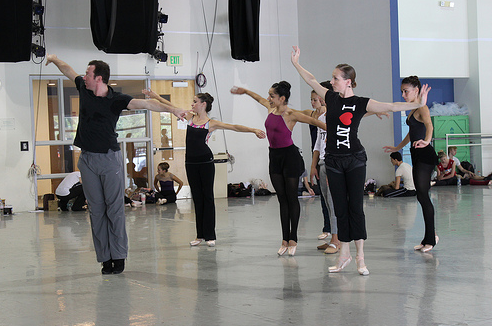
Miami City Ballet on why it’s important to commission new works
Last November, Miami City Ballet received a Knight Arts Challenge grant to support the ballet’s new works fund. Knight recently interviewed Pamela Gardiner, Executive Vice President, Artistic Affairs, at the Miami City Ballet to learn more about why it’s important to commission new works and how they’re approaching their efforts to match Knight’s grant.
Knight Foundation: Why is it important for a company like the Miami City Ballet to commission new works? Pamela Gardiner: Our company is founded on the 20th century aesthetic established by the choreographer George Balanchine. Unlike classical music, which has a really large canon of work to draw from, ballet is different. There just aren’t a lot of master works from the 19th century that have survived. Without new works, the art form just starts to stagnate. Of course, there’s a lot of risk involved in commissioning a new work because you don’t know what you’re going to end up with, and you don’t know if it’s going to be successful. But if you don’t engage in thoughtful risk taking, the body of work won’t grow and the art form will no longer be vital and vibrant.
How did you go about choosing the first artist for the series? It’s actually a great story. Miami City Ballet’s Founding Artistic Director Edward Villella was in London with his wife visiting The Royal Ballet. Monica Mason, the director of The Royal Ballet, invited them to watch a tech rehearsal by one of their ballet corps members, a 23-year-old named Liam Scarlett. Edward, who has an incredibly eye for spotting talent, both in dancers and choreographers, was blown about by what he saw and knew that Liam was an exceptional talent. He asked Monica if he could speak to him about doing a commission for the Miami City Ballet and she gave him her blessing. Edward subsequently ran into Liam in the elevator and introduced himself and invited him to do the work in Miami; he was very excited about the opportunity, especially because he knew and respected the work of Miami City Ballet. I had to apply for a special visa for him to come work here as an artist, but it was worth it because he is such a special talent. He’s been choreographing since he was 11-years-old. We’ve even commissioned him for a second work, which he’s going to do next year.
What made you decide to apply to the Knight Arts Challenge? We’ve been applying to the Knight Arts Challenge since the first cycle and have been fortunate enough to receive multiple grants. For us, it’s very simple, why would you not apply? It’s an opportunity to take on a project that’s important not only to the organization, but also to the community as a whole. In our case, when you create a new work, it’s important to the progress of the field as well. Winning a grant gave us the opportunity to realize projects we might not have otherwise had funding for.
How are you approaching your year of raising funds to match Knight’s grant? Now that you’re several months into your efforts, what has been most successful for you so far? We’re using the funding from Knight to support two world premiers, Liam Scarlett’s Viscera and Alexei Ratmansky’s Symphonic Dances, which is scheduled for March 1. For Symphonic Dances, we’ve received a gift from two individuals donors. For Viscera, a first-time donor provided some seed funding to commission the work. It wasn’t a large gift, but it got us rolling. From there we approached the National Endowment for the Arts, Funding Arts Network and Funding Arts Broward. We’ve also gone back to foundations that had previously supported us and let them know that we’ve received support from Knight Foundation, and that it’d be great if they’d consider matching it.
Have questions about the 2012 Knight Arts Challenge Miami? Join a live web chat at 1 p.m. March 7 at KnightArts.org and an in-person, town hall meeting on March 14 at the Little Haiti Cultural Center. The deadline for the Knight Arts Challenge Miami is March 19. Apply now!
Recent Content
-
Artsarticle ·
-
Artsarticle ·
-
Artsarticle ·

